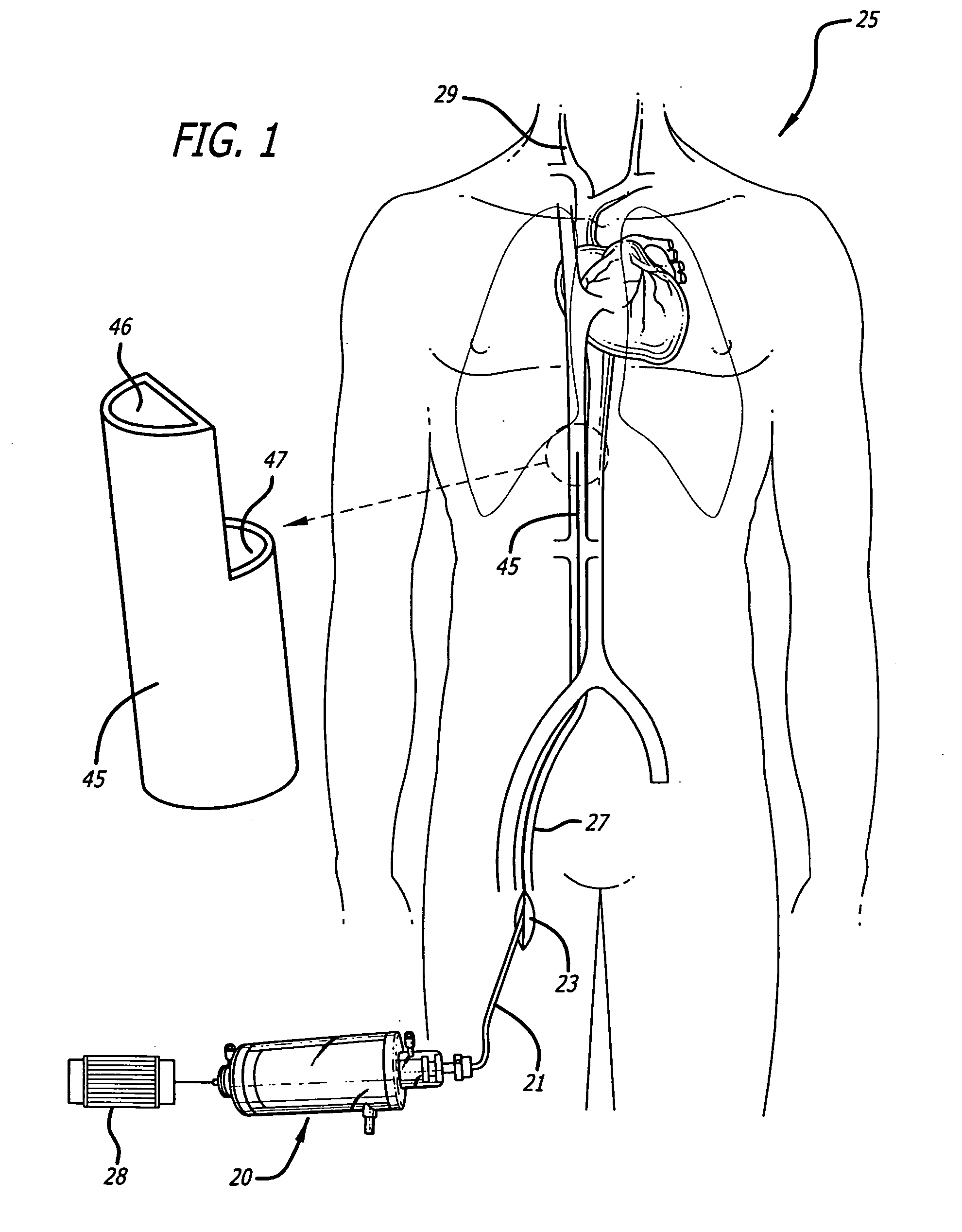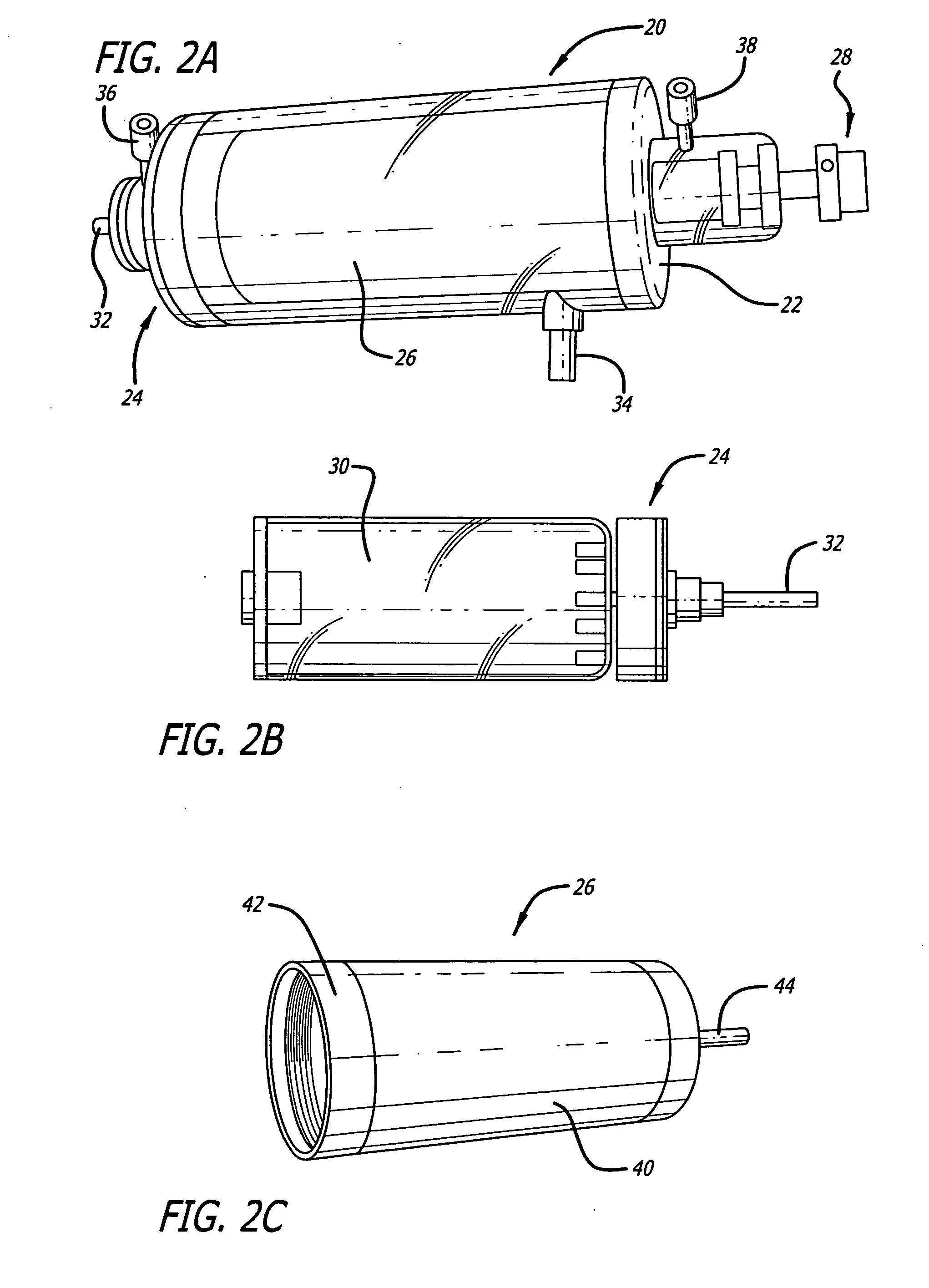Paracorporeal respiratory assist lung
a technology of paracorporeal and oxygenator, which is applied in the field of paracorporeal respiratory assist lung, can solve the problems of exacerbate respiratory insufficiency, serious side effects, and common problems such as inefficient mass transfer (gas exchange) of oxygen and carbon dioxide, and achieves constant flow rate, increase the gas exchange efficiency of artificial lungs, and enhance the effect of gas exchang
- Summary
- Abstract
- Description
- Claims
- Application Information
AI Technical Summary
Benefits of technology
Problems solved by technology
Method used
Image
Examples
Embodiment Construction
[0059] The present invention is directed to an improved veno-venous extracorporeal oxygenator, referred to herein as a “paracorporeal respiratory assist lung” or “PRAL device.” The paracorporeal respiratory assist lung of the present invention includes a rotating hollow fiber membrane bundle to increase the gas exchange efficiency of the device by reducing the boundary layer phenomena caused by blood flowing over the fibers. U.S. Pat. No. 5,830,370 (Maloney et al.); U.S. Pat. No. 5,900,142 (Maloney et al.); U.S. Pat. No. 6,106,776 (Borovetz et al.); U.S. Pat. No. 6,217,826 (Reeder et al.); U.S. Pat. No. 6,348,175 (Borovetz et al.); U.S. Pat. No. 6,723,284 (Reeder et al.) and U.S. Publication No. 2004 / 0219,061 (Reeder et al.) are incorporated herein in their entirety by reference.
[0060] The paracorporeal respiratory assist lung of the present invention has been developed for patients suffering from acute lung failures and acute exacerbations of chronic lung diseases. The design conc...
PUM
 Login to View More
Login to View More Abstract
Description
Claims
Application Information
 Login to View More
Login to View More - R&D
- Intellectual Property
- Life Sciences
- Materials
- Tech Scout
- Unparalleled Data Quality
- Higher Quality Content
- 60% Fewer Hallucinations
Browse by: Latest US Patents, China's latest patents, Technical Efficacy Thesaurus, Application Domain, Technology Topic, Popular Technical Reports.
© 2025 PatSnap. All rights reserved.Legal|Privacy policy|Modern Slavery Act Transparency Statement|Sitemap|About US| Contact US: help@patsnap.com



